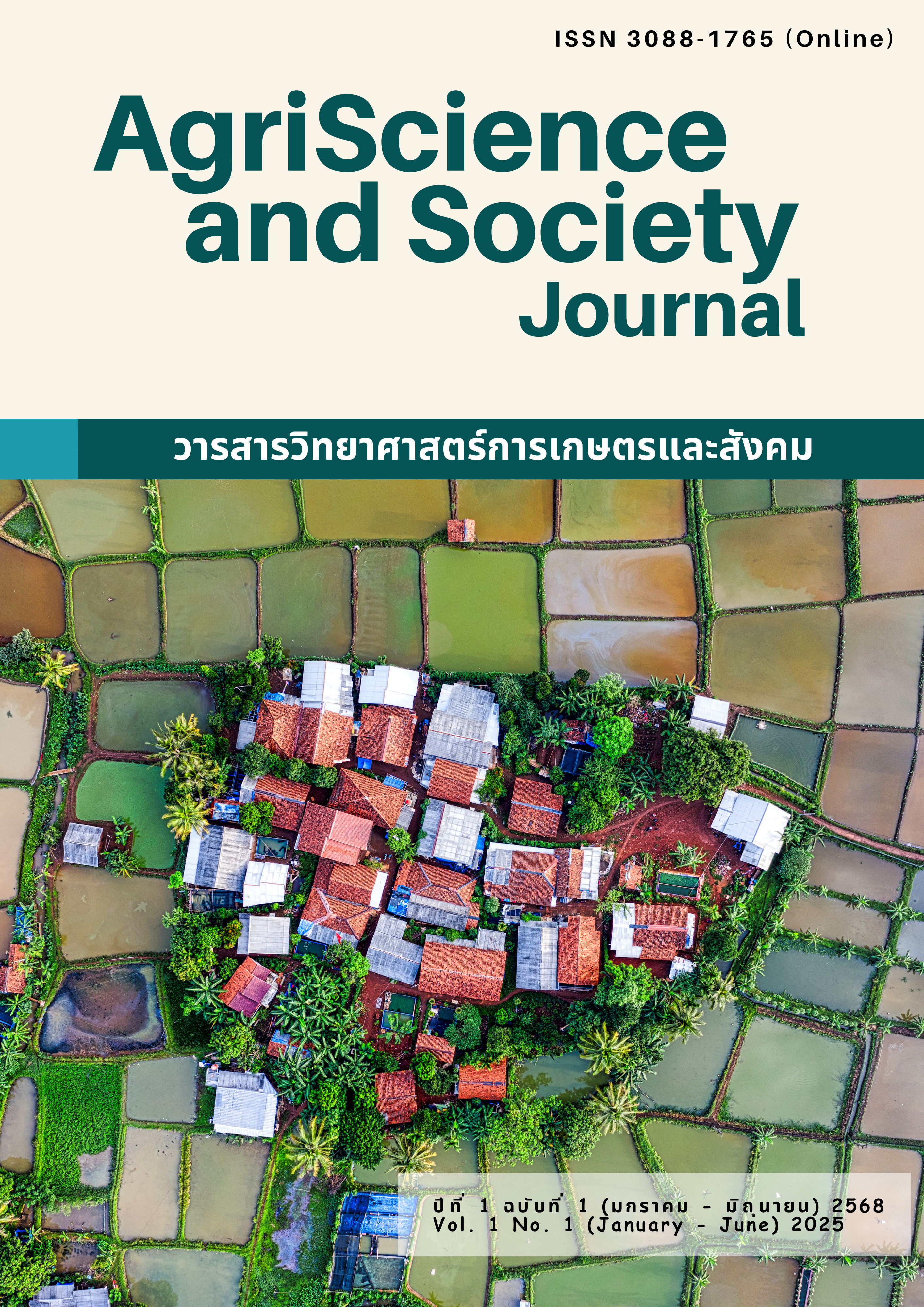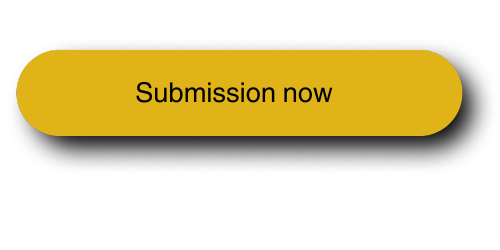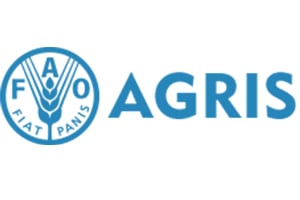Efficacy of Various Trichoderma spp. in Controlling Anthracnose Disease in White Chaiburi Pepper (Capsicum frutescens)
Keywords:
Anthracnose, Colletotrichum spp., Trichoderma spp., White Chaiburi pepper (Capsicum frutescens)Abstract
Abstract
This study aimed to evaluate the efficacy of three Trichoderma strains (TSU, TSUZ2-03, and PT3.5) in controlling anthracnose disease caused by Colletotrichum spp. in White Chaiburi pepper, through laboratory. Chili fruits showing disease symptoms were collected and subjected to a pathogenicity test. Three isolates of the pathogen were obtained, designated as Chi-1, Chi-2, and Chi-3. Among them, isolate Chi-2 showed the highest disease severity (lesion width of 0.9 cm.) Results demonstrated that Trichoderma TSU exhibited the highest inhibitory activity, reduced lesion size on pepper fruits to an average of 0.33 – 0.4 cm, and achieved a 67.26% inhibition rate, while PT3.5 and TSUZ2-03 showed lower efficacy (38.56% and 13.56%, respectively). Field trials confirmed that Trichoderma TSU significantly reduced disease severity (p<0.01) compared to the control group. These findings highlight Trichoderma TSU as a promising biocontrol agent for sustainable anthracnose management in White Chaiburi pepper, offering an alternative to synthetic chemical pesticides.
References
Bell, D.K., Wells, H.D., and Markham, C.R. (1982). In vitro antagonism of Trichoderma spp. against six fungal plant pathogens. Phytopathology, 72, 379–382.
Benítez, T., Rincón, A.M., Limón, M.C., and Codón, A.C. (2004). Biocontrol mechanisms of Trichoderma strains. International Microbiology, 7(4), 249–260.
Department of Agriculture Extension. 2021. Report on the production situation of chili in Thailand. Ministry of Agriculture and Cooperatives. [accessed 01 April 2025]
Harman, G.E., Howell, C.R., Viterbo, A., Chet I., and Lorito., M. (2004). Trichoderma species—opportunistic, avirulent plant symbionts. Nature Reviews Microbiology, 2(1), 43–56. https://doi.org/10.1038/nrmicro797
Lorito, M., Woo, S.L., Harman, G.E., and Monte, E. (2010). Translational research on Trichoderma: from ’omics to the field. Annual Review of Phytopathology, 48, 395–417. https://doi.org/10.1146/annurev-phyto-073009-114314
Oerke, E.C. (2006). Crop losses to pests. Journal of Agricultural Science, 144(1), 31–43. https://doi.org/10.1017/S0021859605005708
Regional Science Park, South. (2021). Area-based innovation for community local startups (Full research report). Thaksin University, Phatthalung.
Saxena, A., Raghuwanshi, R., Gupta, V.K., and Singh, H.B. (2016). Chilli anthracnose: the epidemiology and management. Frontier in Microbiology, 30(7), 1527. https://doi.org/10.3389/fmicb.2016.01527
Shi, X.C., Wang, S.Y., Duan, X.C., Wang, Y.Z., Liu F.Q., and Laborda, P. (2021). Biocontrol strategies for the management of Colletotrichum species in postharvest fruits. Crop Protection, 141, 105454. https://doi.org/10.1016/j.cropro.2020.105454
Shoresh, M., Harman G.E., and Mastouri, F. (2010). Induced systemic resistance and plant responses to fungal biocontrol agents. Annual Review of Phytopathology, 48, 21–43.
Vinale, F., Sivasithamparam K, Ghisalberti Emilio L., Marra R., Woo, S.L. and Lorito, M., (2008). Trichoderma–plant–pathogen interactions. Soil Biology and Biochemistry, 40(1), 1–10. https://doi.org/10.1016/j.soilbio.2007.07.002
Downloads
Published
How to Cite
Issue
Section
License
Copyright (c) 2025 คณะทรัพยากรธรรมชาติ

This work is licensed under a Creative Commons Attribution-NonCommercial-NoDerivatives 4.0 International License.
Natural Resources and Agricultural Sciences Journal is licensed under a Creative Commons Attribution-NonCommercial-NoDerivatives 4.0 International (CC BY-NC-ND 4.0) licence, unless otherwise stated. Please read our Policies page for more information on Open Access, copyright and permissions.






